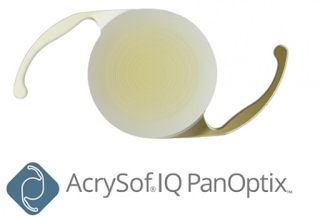But there are many differing opinions on which intraocular lens implant is the best worldwide.
Most eye surgeons try to communicate to all their cataract-surgery or clear lens exchange patients the fact that while it is the best time in history to have cataract surgery, there is no guarantee of being glasses-free with any implant in the world. There is NO perfect implant (ie, intraocular lens or IOL) to help with all one’s visual needs.
Often a patient cannot process this idea. We live in the 21st Century where so many ills can be fixed. Surgeons often tell patients multiple times in a visit of this “no guarantee,” but still patients can be very disappointed as they thought they would be “glasses free” forever after the cataract surgery.
The natural lens when we are young (ie, normally younger than 40 years old) has an amazing ability to focus for distance, intermediate, and near–sometimes very near. As we get older our natural lens loses the ability to focus. This leads to the need for reading glasses.
The first IOL was a Monofocal IOL.
The Monofocal IOL allows patients having cataract surgery to focus the light entering onto their macula from 1 visual plane. The ability to see intermediate distances and reading distances is limited; thus patients need glasses for these distances.
If a patient has astigmatism (ie, the cornea is shaped like a football instead of a soccer ball’s surface), a patient’s vision even in the distance will be blurry and require glasses.
Advanced Technology IOLs:
Newer implants such as the Multifocal (ie, Tecnis Multifocal, Restor, Active Focus) and Depth of Focus Lenses, such as the Symfony, are all trying to find the Holy Grail of giving a patient perfect distance, intermediate, and reading without the need for glasses.
The newest IOL is the Panoptix which hopes to be the best of them all. The Panoptix was recently approved by the FDA but has been used in Europe for the last 1.5 years. The initial data coming from Europe and the FDA trials look promising.
Still, however, none of these implants have a 100% guarantee. There is still always a chance that even with the best implant, a patient will need glasses.
The numbers below show the risk of needing glasses in the best two implants currently available in the USA. The PanOptix appears to have better rates of “being glasses-free” for distance and reading. But note, none of the numbers approach 90%. If one is looking for perfection of 20/20, the rates are lower. The PanOptix may be the best the world has for now.
Highlighted in Yellow: better outcome variable between Panoptix and Symfony.
Studies comparing the two in the same patient are not available. There have been many surgeons globally who have mixed and matched these lenses trying to help the patient be happy with their vision needs. Sometimes we get it right; sometimes we do not.
Every patient needs to know that there are no quick fixes in terms of being “fully-glasses free” without a give and take or haloes and glare in some cases. It sometimes takes time to help your brain to adjust or to decrease astigmatism manually or with the help of another laser or even changing out the implant. Working with your surgeon to explain your needs before surgery is crucial. Trying to work with your brain and its ability to accept the new lens and communicating with your surgeon about this struggle is key as well.
Sandra Lora Cremers, MD, FACS
References:
1. FDA studies for Symphony and Panoptix
 Clin Ophthalmol. 2016 Jun 2;10:1031-8. doi: 10.2147/OPTH.S106646. eCollection 2016.
Clin Ophthalmol. 2016 Jun 2;10:1031-8. doi: 10.2147/OPTH.S106646. eCollection 2016.




